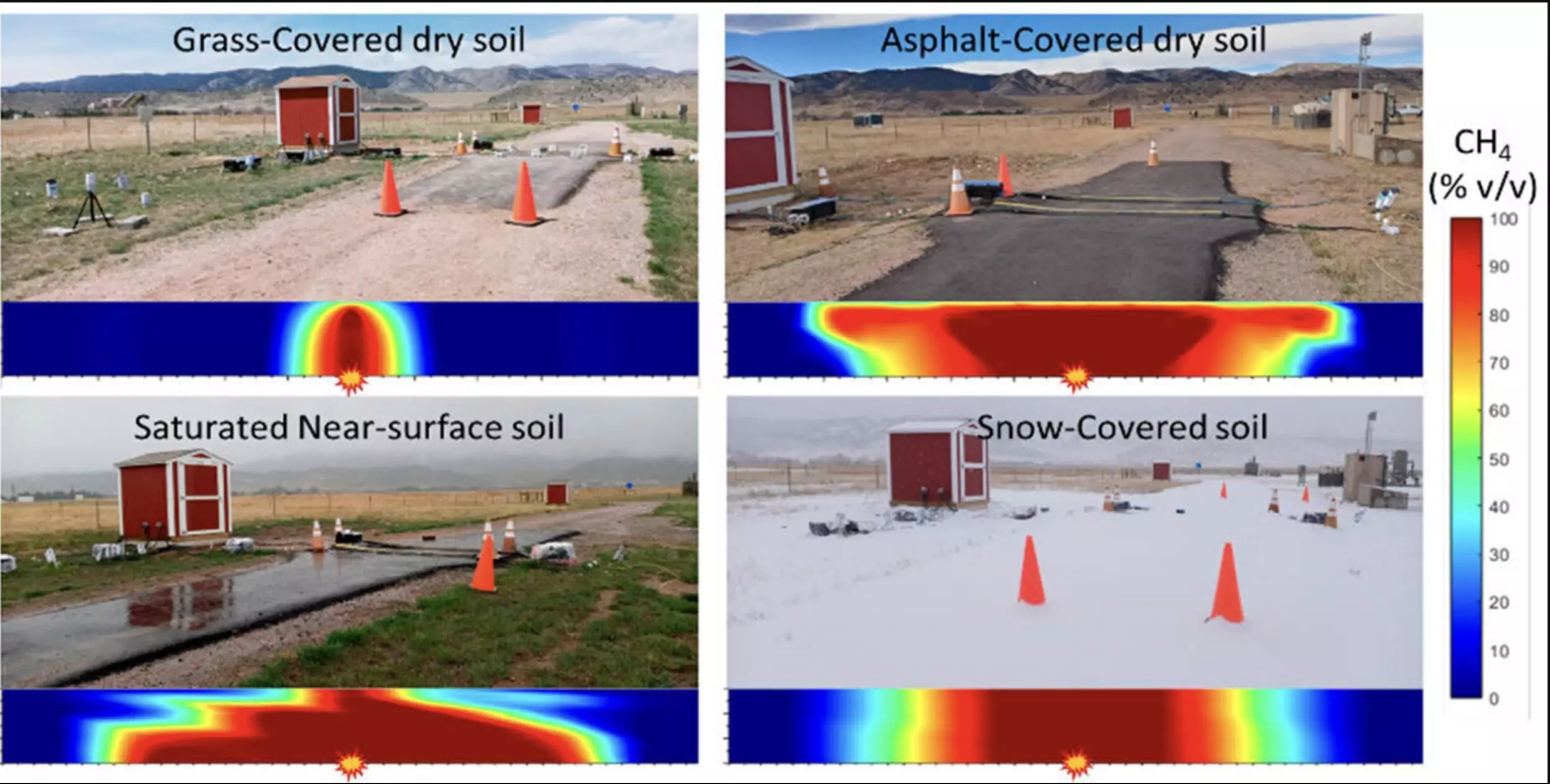Recent research led by Southern Methodist University (SMU) has opened new avenues of understanding regarding the behavior of natural gas when it leaks from underground pipelines. The study reveals that the presence of water, snow, or asphalt on the surface can significantly alter how far and how fast leaked gas travels. Under conditions marked by saturation from water or snow, gas can migrate up to three to four times farther than in dry soil environments. Furthermore, the velocity of the gas under these wet conditions can accelerate by a staggering factor of 3.5. Such findings are not just academic; they bear real-world significance that both safety professionals and environmentalists must heed.
Exploring the Research Methodology
A pivotal aspect of this research was conducted using controlled leak experiments at Colorado State University’s Methane Emissions Technology Evaluation Center (METEC). Here, gas was intentionally released from a damaged pipeline while researchers monitored the gas’s penetration through various soil compositions and surface covers like grass, asphalt, and inclement weather conditions. They aimed to replicate a realistic leak scenario to gauge how different factors influence gas dispersal.
What is particularly compelling is the use of qualitative metaphors to describe the behavior of gas migration—think of it as gas navigating through a block of Swiss cheese. This imagery vividly illustrates how surface conditions can create channels that facilitate the movement of gas both horizontally and vertically, leading to potentially explosive situations far from the leak source.
Environmental and Safety Implications
Two critical hazards are tied to leaking natural gas: the immediate risk of explosion due to uncombusted methane and the longer-term threat posed by methane as a potent greenhouse gas contributing significantly to global warming. The urgency of understanding these dynamics is underscored by the broader environmental implications. By efficiently pinpointing where methane seeps from these leaks, efforts can be accelerated to mitigate the release of this dangerous gas, thus contributing to climate action.
Kathleen M. Smits, co-author of the study and a notable figure in civil and environmental engineering, underscores that these findings will catalyze improvements in leak detection and management. First responders and gas companies alike must take into account these varying surface conditions to assess risks accurately, informing how they approach incident response and remediation.
The Persistence of Methane After a Leak
Another noteworthy discovery made by the research team is the unexpected longevity of methane concentrations after a leak has been addressed. Following the termination of gas flow, methane trapped under snow, wet soil, or asphalt may linger at high concentrations for up to 12 days. This insight challenges previous assumptions that gas would dissipate quickly after a leak is sealed. Such residual gas can further complicate safety protocols following a pipeline accident, indicating that the site remains hazardous well after the visible leak has been contained.
This behavioral persistence can amplify risks during emergency responses, as first responders must remain vigilant for the possibility of subsequent gas migration even after initial source control measures have been implemented.
Implications for Future Research and Policy
The results from this study hold the potential to reshape how both industry and regulatory bodies implement and revise policies concerning pipeline safety and environmental oversight. As the research indicates differing behaviors based on soil and surface conditions, it paves the way for customized approaches to risk assessment across various geographic settings.
Given the vital nature of the findings, continuous research is essential. Future studies could delve deeper into how variables like soil composition, population density near pipelines, and seasonal changes affect gas migration patterns. Additionally, more survey and monitoring tools could be developed to allow for real-time analysis of pipeline integrity in relation to environmental conditions.
In light of these mini-explorations into surface conditions and gas behavior dynamics, it becomes clear that the intersection of academic research and practical application is crucial for enhancing public safety and environmental stewardship. These groundbreaking insights will not only help mitigate risks associated with pipeline leaks but also contribute to a wider dialogue about climate change efforts.
Ultimately, as interdependent facets of modern infrastructure and environmental health become more intertwined, studies like this will be instrumental in driving forthcoming standards and innovations.

